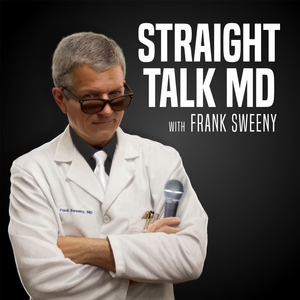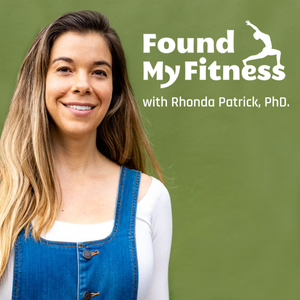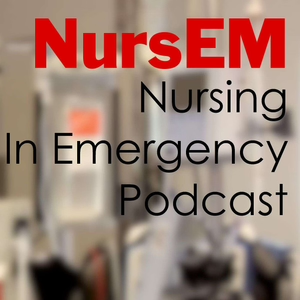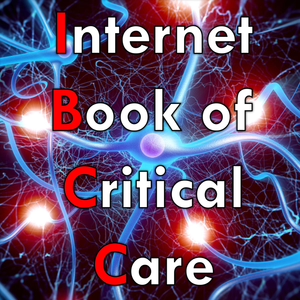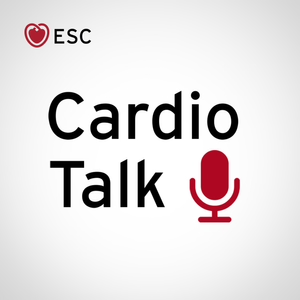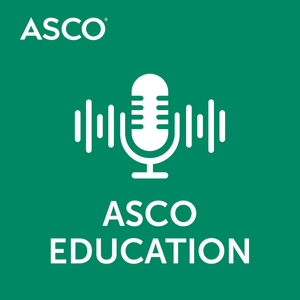
Contrasting Cases: TAILORx- Chemotherapy or no?
03/06/19 • 6 min
Dr. Sparano is Professor of Medicine & Obstetrics, Gynecology, and Women's Health at the Albert Einstein College of Medicine, Associate Chairman for Clinical Research in the Department of Oncology at Montefiore Medical Center, and Associate Director for Clinical Research at the Albert Einstein Cancer Center. He also serves as Vice Chair of the ECOG-ACRIN Research Group and Vice Chair of the AIDS Malignancy Consortium. He is former director of the Hematology-Oncology Fellowship Program at Einstein/Montefiore, co-directs the ECOG-ACRIN Young Investigator Program, and is a faculty member of the Calabresi K12 Oncology Training Program. He is co-principal investigator of the Montefiore-Einstein Minority/Underserved National Community Oncology Research Program (NCORP) grant (in conjunction with Dr. Bruce Rapkin), which funds multicenter, NCI-sponsored clinical trials in cancer therapeutics, cancer prevention/control, and cancer care delivery research. He is also the recipient of funding from the Breast Cancer Research Foundation that is supporting creation of a biospecimen bank designed to identify determinants of late relapse.
Dr. Sparano is a practicing clinician who specializes in medical oncology and clinical and translational cancer research. His research has focused on developmental therapeutic approaches for breast cancer, lymphoma, and HIV-associated cancers, and therapeutic application of molecular profiling in cancer. TRANSCRIPT
Welcome to the ASCO University Weekly Podcast. My name is Joseph Sparano, and I am Associate Director for Clinical Research at the Albert Einstein Cancer Center, and chief of the section of breast medical oncology at Montefiore Medical Center in New York. Today, we contrast two cases on adjuvant treatment of breast cancer. The standard treatment for hormone receptor positive, HER2 negative, early stage breast cancer is surgery, followed by endocrine therapy. Since the early 2000s, adjuvant chemotherapy has also been recommended to the majority of these women, but the added benefit from chemotherapy is modest for most. Many different gene expression assays have been developed to determine prognosis and identify which woman may be more likely to benefit from chemotherapy. One commercial test that is recommended in clinical practice guidelines is a 21 gene recurrence score assay. Based on the recently completed TAILORx study, it was known that woman with low recurrence scores on the 21 gene expression assay do well with adjuvant endocrine therapy alone. Whereas woman with high recurrence scores benefit from adjuvant endocrine therapy and chemotherapy. The TAILORx study clarified the best treatment option for women with an intermediate recurrence score, which was defined as a recurrence score of 11 to 25 in the trial. This is particularly important because the majority of patients fall in this intermediate risk category, up to 70%, in fact. Before we discuss the new evidence reported from this study, let's take a look at two intermediate risk cases. These two cases are very similar, yet the recommended treatments may be very different. Can you identify the key differences between these two cases? We begin with the first case. Case 1 is a 55-year-old postmenopausal woman with a node negative, ER positive, PR positive, HER2 negative breast cancer. The size of the tumor is 1.6 sonometers. The 21-gene recurrence score is 24, which is in the upper range of the intermediate risk category. Which option would you recommend as the best systemic treatment. The choices in this case include endocrine therapy alone or chemotherapy followed by endocrine therapy. The correct answer to this question is, A, endocrine therapy alone. We will discuss the rationale for this recommendation shortly, but first let's move on to the second case. The second case is a 44-year-old premenopausal woman with node negative, ER positive, PR positive, HER2 negative breast cancer. Like case 1, the size of the tumor is 1.6 centimeters and the 21-gene recurrence score is 24. Which option would be the best adjuvant treatment in this case? The choices here include endocrine therapy alone or chemotherapy, followed by endocrine therapy. The correct answer in this case is chemotherapy, followed by endocrine therapy. Both of these cases had nearly identical clinical presentations. That is, they presented with ER, PR positive, HER2 negative breast cancer, associated with negative axillary nodes, a primary tumor size of 1.6 sonometers, and a 21-gene recurrence score of 24. However, the key difference was the age at presentation, with one patient being in her mid 50's and postmenopausal, and the other patient being in her mid 40's and premenopausal. The TAILORx trial found that endocrine therapy was not inferior to chemotherapy plus endocrine therapy in the overall population with a mid-range 21-gene recurrence score of 11 to 25. However, there was an interaction between age, chemotherapy treatment, and...
Dr. Sparano is Professor of Medicine & Obstetrics, Gynecology, and Women's Health at the Albert Einstein College of Medicine, Associate Chairman for Clinical Research in the Department of Oncology at Montefiore Medical Center, and Associate Director for Clinical Research at the Albert Einstein Cancer Center. He also serves as Vice Chair of the ECOG-ACRIN Research Group and Vice Chair of the AIDS Malignancy Consortium. He is former director of the Hematology-Oncology Fellowship Program at Einstein/Montefiore, co-directs the ECOG-ACRIN Young Investigator Program, and is a faculty member of the Calabresi K12 Oncology Training Program. He is co-principal investigator of the Montefiore-Einstein Minority/Underserved National Community Oncology Research Program (NCORP) grant (in conjunction with Dr. Bruce Rapkin), which funds multicenter, NCI-sponsored clinical trials in cancer therapeutics, cancer prevention/control, and cancer care delivery research. He is also the recipient of funding from the Breast Cancer Research Foundation that is supporting creation of a biospecimen bank designed to identify determinants of late relapse.
Dr. Sparano is a practicing clinician who specializes in medical oncology and clinical and translational cancer research. His research has focused on developmental therapeutic approaches for breast cancer, lymphoma, and HIV-associated cancers, and therapeutic application of molecular profiling in cancer. TRANSCRIPT
Welcome to the ASCO University Weekly Podcast. My name is Joseph Sparano, and I am Associate Director for Clinical Research at the Albert Einstein Cancer Center, and chief of the section of breast medical oncology at Montefiore Medical Center in New York. Today, we contrast two cases on adjuvant treatment of breast cancer. The standard treatment for hormone receptor positive, HER2 negative, early stage breast cancer is surgery, followed by endocrine therapy. Since the early 2000s, adjuvant chemotherapy has also been recommended to the majority of these women, but the added benefit from chemotherapy is modest for most. Many different gene expression assays have been developed to determine prognosis and identify which woman may be more likely to benefit from chemotherapy. One commercial test that is recommended in clinical practice guidelines is a 21 gene recurrence score assay. Based on the recently completed TAILORx study, it was known that woman with low recurrence scores on the 21 gene expression assay do well with adjuvant endocrine therapy alone. Whereas woman with high recurrence scores benefit from adjuvant endocrine therapy and chemotherapy. The TAILORx study clarified the best treatment option for women with an intermediate recurrence score, which was defined as a recurrence score of 11 to 25 in the trial. This is particularly important because the majority of patients fall in this intermediate risk category, up to 70%, in fact. Before we discuss the new evidence reported from this study, let's take a look at two intermediate risk cases. These two cases are very similar, yet the recommended treatments may be very different. Can you identify the key differences between these two cases? We begin with the first case. Case 1 is a 55-year-old postmenopausal woman with a node negative, ER positive, PR positive, HER2 negative breast cancer. The size of the tumor is 1.6 sonometers. The 21-gene recurrence score is 24, which is in the upper range of the intermediate risk category. Which option would you recommend as the best systemic treatment. The choices in this case include endocrine therapy alone or chemotherapy followed by endocrine therapy. The correct answer to this question is, A, endocrine therapy alone. We will discuss the rationale for this recommendation shortly, but first let's move on to the second case. The second case is a 44-year-old premenopausal woman with node negative, ER positive, PR positive, HER2 negative breast cancer. Like case 1, the size of the tumor is 1.6 centimeters and the 21-gene recurrence score is 24. Which option would be the best adjuvant treatment in this case? The choices here include endocrine therapy alone or chemotherapy, followed by endocrine therapy. The correct answer in this case is chemotherapy, followed by endocrine therapy. Both of these cases had nearly identical clinical presentations. That is, they presented with ER, PR positive, HER2 negative breast cancer, associated with negative axillary nodes, a primary tumor size of 1.6 sonometers, and a 21-gene recurrence score of 24. However, the key difference was the age at presentation, with one patient being in her mid 50's and postmenopausal, and the other patient being in her mid 40's and premenopausal. The TAILORx trial found that endocrine therapy was not inferior to chemotherapy plus endocrine therapy in the overall population with a mid-range 21-gene recurrence score of 11 to 25. However, there was an interaction between age, chemotherapy treatment, and...
Previous Episode

Self-Evaluation: Soft-Tissue Sarcomas-Epidemiology
Dr. Arun Singh, Co-Clinical Director of UCLA Sarcoma Clinic and Assistant Professor of Hematology and Oncology at UCLA, presents a self-assessment question from an ASCO University course focusing on the treatment of non-small cell lung cancers.
Next Episode

Self-Evaluation: Chemotherapy Dosing for Patients with Morbid Obesity
Wendy Vogel is a Nurse Practitioner and President of APSHO, the Advanced Practitioner Society for Hematology and Oncology. In this week's episode, she presents a self-evaluation question about the correct chemotherapy treatment of obese patients and provides an explanation of the correct choice.
If you like this episode you’ll love
Episode Comments
Generate a badge
Get a badge for your website that links back to this episode
<a href="https://goodpods.com/podcasts/asco-education-424136/contrasting-cases-tailorx-chemotherapy-or-no-58516305"> <img src="https://storage.googleapis.com/goodpods-images-bucket/badges/generic-badge-1.svg" alt="listen to contrasting cases: tailorx- chemotherapy or no? on goodpods" style="width: 225px" /> </a>
Copy
